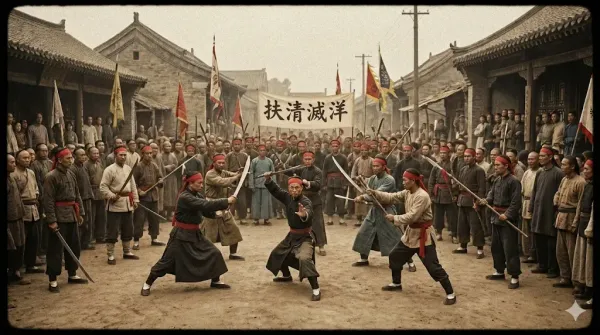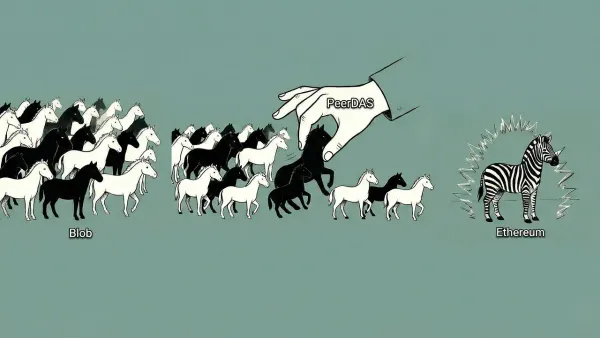Polymarket Manipulated by Whales! Decentralized Oracle "Calls a Deer a Horse"
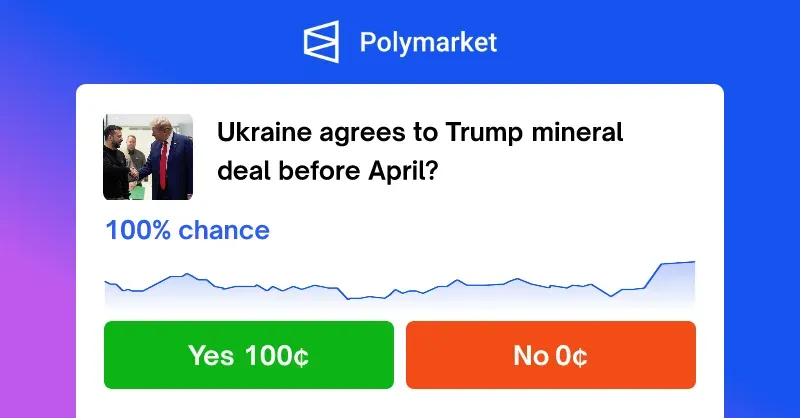
GM,
During last year's U.S. presidential election, Blocktrend covered the Polymarket on-chain prediction market. It operates as a marketplace where users can bet on future events using cryptocurrency, with the tagline: Profit from what you know best.However, I also pointed out¹ that Polymarket relies on the UMA (Universal Market Access) oracle, which determines truth through token-based voting. In extreme cases, this mechanism could lead to results that are blatantly false—a scenario akin to "swear black is white" (指鹿為馬).
Unfortunately, this warning has come true. This week, a prediction market on Polymarket concerning a U.S.-Ukraine mineral agreement was maliciously manipulated. Despite no actual agreement being reached between the U.S. and Ukraine, the market incorrectly resolved the outcome in the opposite direction, causing financial losses for some participants. In this article, we will explore how UMA uses economic incentives to determine the truth—and how it can be exploited.
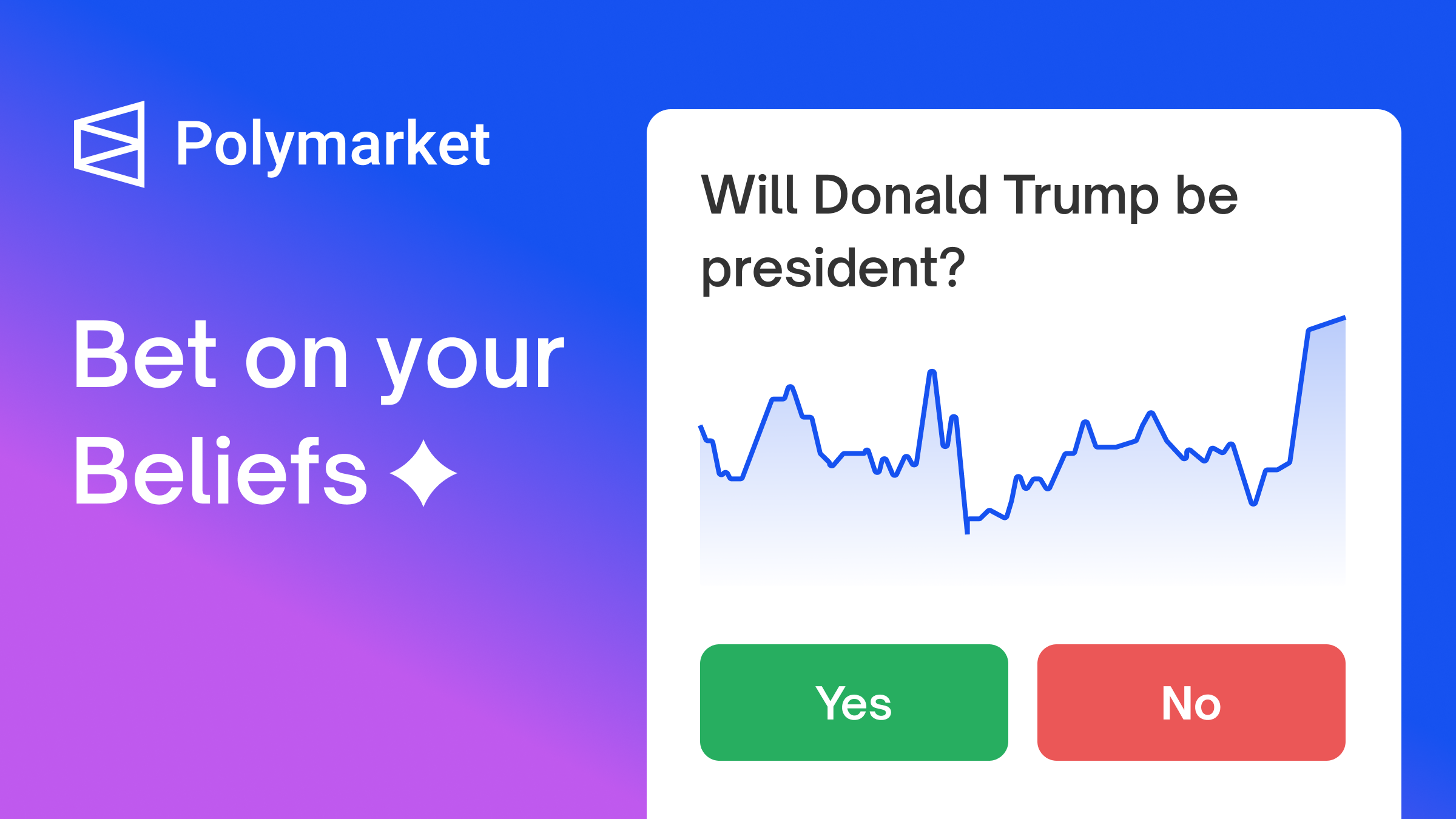
Rare Earth Negotiations
The controversial betting topic was: “Will Ukraine agree to Trump’s mineral deal before April?” According to the market’s proposal description:
If the U.S. and Ukraine reach any explicit agreement involving Ukrainian rare earth minerals between February 2, 2025, and March 31, 2025, at 11:59 PM Eastern Time, the prediction market will resolve as "Yes". Otherwise, it will resolve as "No".
This includes agreements exchanging Ukrainian rare earth minerals for U.S. aid, cooperation agreements involving rare earth minerals, mining rights, or other forms of collaboration. Whether the agreement is ultimately enacted or not, as long as there is an official announcement, it qualifies. The outcome will be determined based on official statements from the U.S. and Ukrainian governments.
Rare earth minerals are critical raw materials for semiconductor manufacturing and are also part of China’s national strategic reserves². A review of the prediction market’s probability trend shows that starting in March, the likelihood of a U.S.-Ukraine mineral agreement dropped sharply from 80% down to a low of 9%. However, at the last moment, the probability suddenly surged to 100%, causing the market to close early.
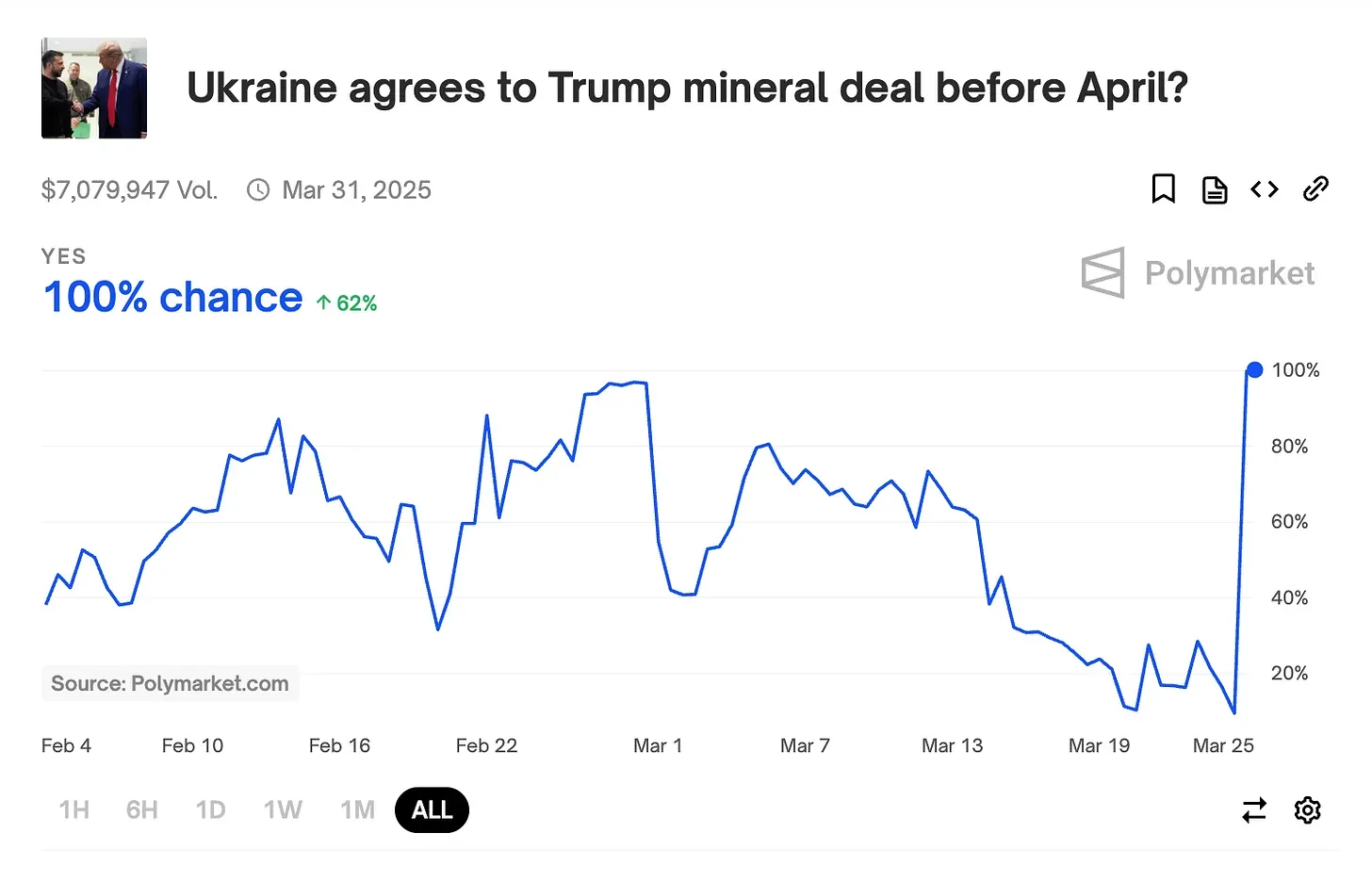
According to Polymarket’s rules, participants who bet “Yes” saw their shares rise in value to $1 per share, profiting from the price difference. Meanwhile, those who bet “No” lost everything.
However, as of the time of writing, the latest media reports on the mineral agreement still describe it as "pending signature." There are also no official announcements regarding the agreement on the U.S. or Ukrainian government websites. This means the prediction market’s outcome not only contradicts reality but also violates its own established rules, sparking significant controversy.
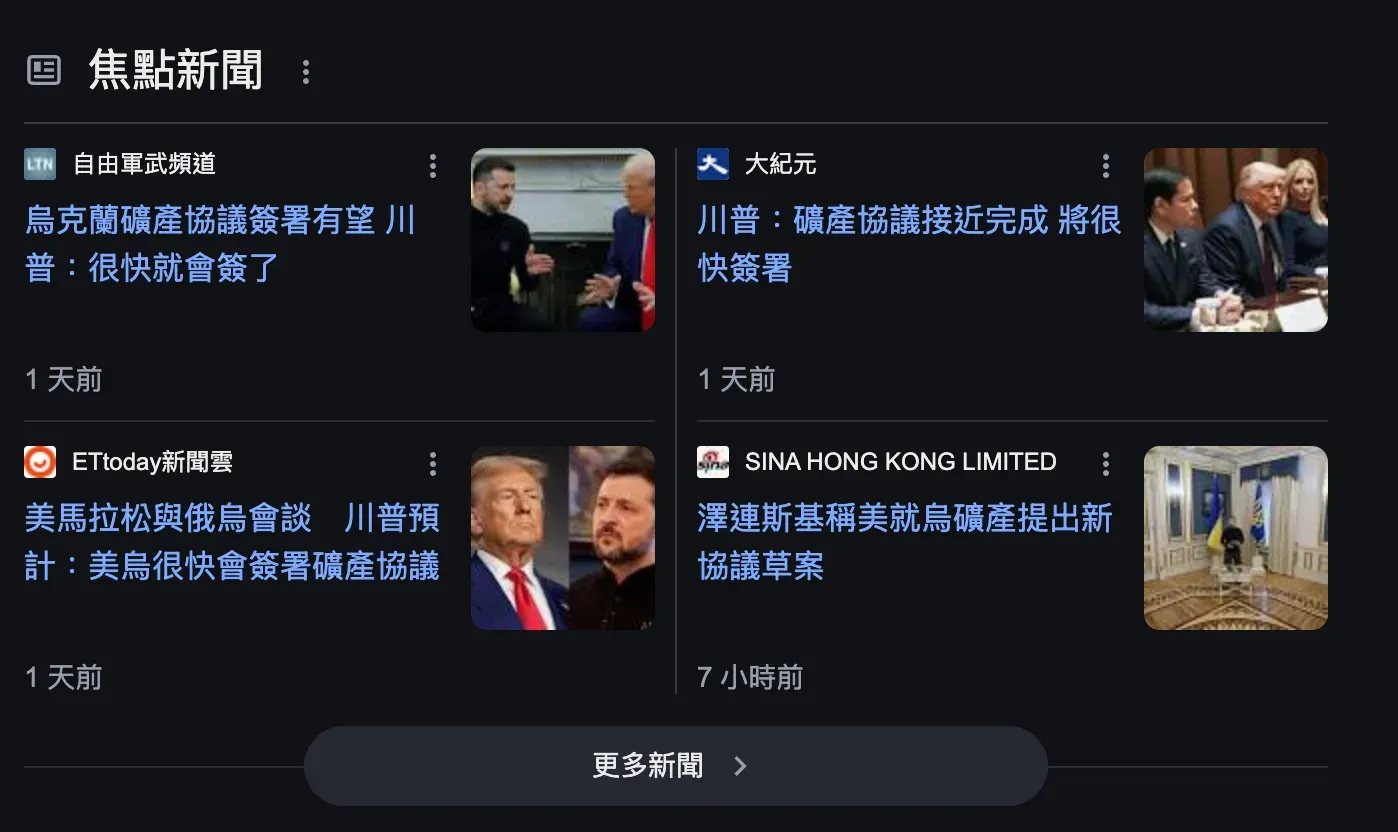
Some netizens pointed out that this was manipulated by large stakeholders behind the scenes. Even though the correct outcome should have been "No," these whales, unwilling to accept their losses, used the UMA oracle to distort reality.
The Truth Oracle
UMA is an Optimistic Oracle built for Web3. Its function is to report real-world events to the blockchain, enabling smart contracts to react based on real-time information.
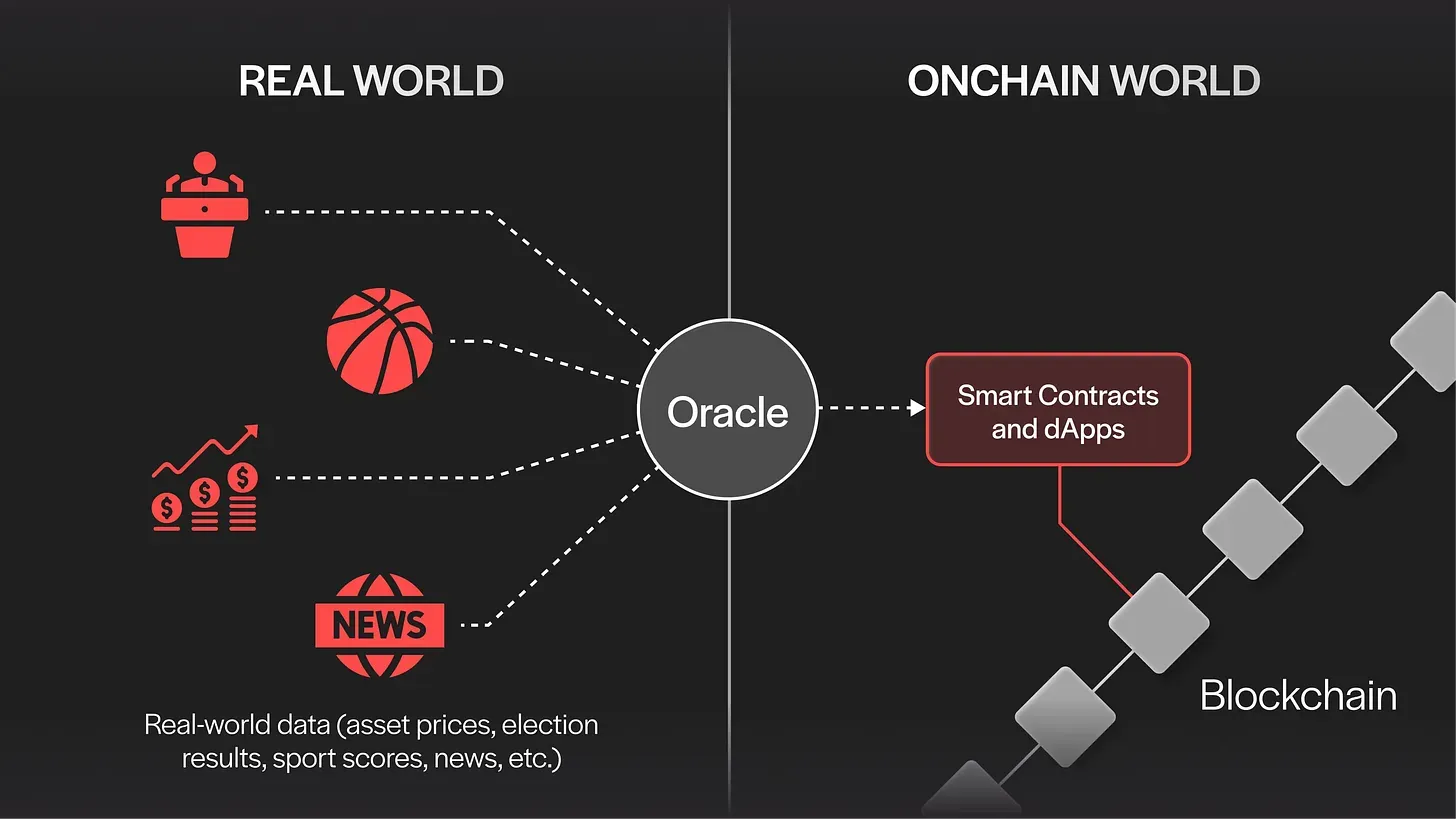
The operation of UMA is divided into four steps:
First, someone must submit a natural language statement along with a collateral deposit. For example, I could propose the statement, "The President of Taiwan is Lai Ching-te." This statement then enters a challenge period. If no one disputes it, it is considered true (over 98% of submissions go unchallenged). However, if someone objects—arguing that the President of Taiwan is not Lai Ching-te—the dispute is escalated to UMA’s resolution mechanism, where UMA token holders vote on the final outcome. Those who align with the majority decision receive a reward.
This system is based on two flawed optimistic assumptions:
- If no one objects, the statement must be true.
- The majority’s decision is always correct.
UMA assumes that no one would risk losing their collateral by submitting a false statement and that the collective wisdom of the crowd will prevent blatant falsehoods from passing.
However, this overly optimistic design turned out to be the biggest vulnerability in the Polymarket dispute. In the U.S.-Ukraine mineral deal controversy, UMA underwent two rounds of voting, yet the manipulated result was never overturned. The key issue? UMA’s voting system is based entirely on token holdings rather than a one-person-one-vote model. Netizens discovered that a single whale, holding 5 million $UMA (worth approximately 230 million TWD), cast the decisive majority vote during the dispute resolution process.
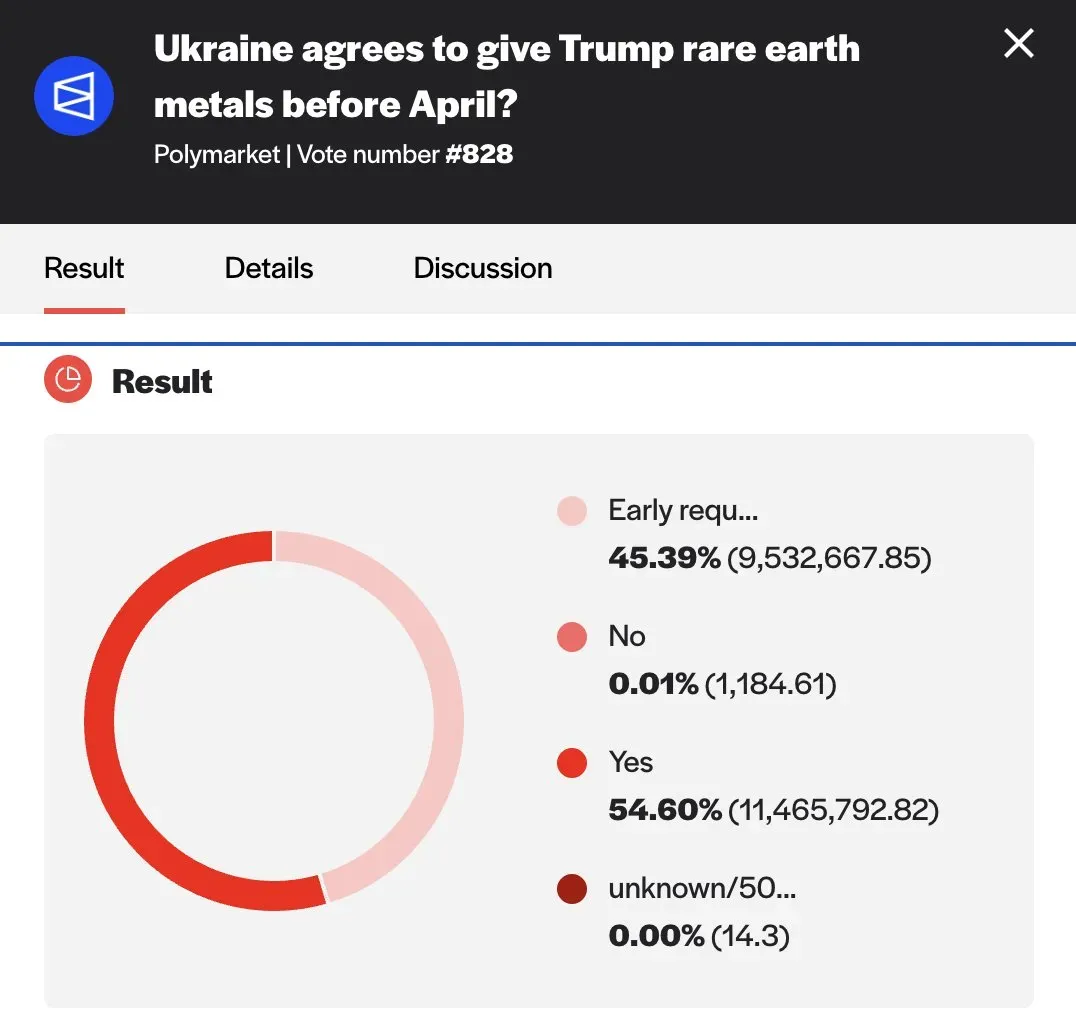
Moreover, UMA’s majority-rule mechanism incentivizes people to follow the crowd—even if they suspect the result is flawed, they hesitate to take a minority stance. Ultimately, those who correctly argued that the result was prematurely settled became the outnumbered minority and were effectively penalized for being right.
Although Polymarket has acknowledged that the prediction result was incorrect, it insists that this does not constitute a "market failure." Not only has it refused to issue compensation, but it has also shifted full responsibility onto the UMA oracle system in an attempt to distance itself. However, since Polymarket chose UMA as its truth oracle, the current outcome is undeniably a system failure, making it difficult for Polymarket to escape accountability. More importantly, the biggest victims are not just those who made the correct prediction but also Polymarket’s early adopters.
The situation is still unfolding, and neither Polymarket nor UMA has proposed any solutions yet. However, this incident has led me to unexpectedly discover several absurd prediction markets on Polymarket.
The Second Coming of Jesus
The chart below shows the probability trend for the market predicting whether Jesus will return in 2025. According to the description:
If Jesus Christ returns before 11:59 PM ET on December 31, 2025, this market will resolve to "Yes."Otherwise, it will resolve to "No." The outcome will be determined based on the consensus of reliable sources.
Surprisingly, the probability of Jesus returning in 2025 is as high as 3%! Even church pastors might not have expected that.
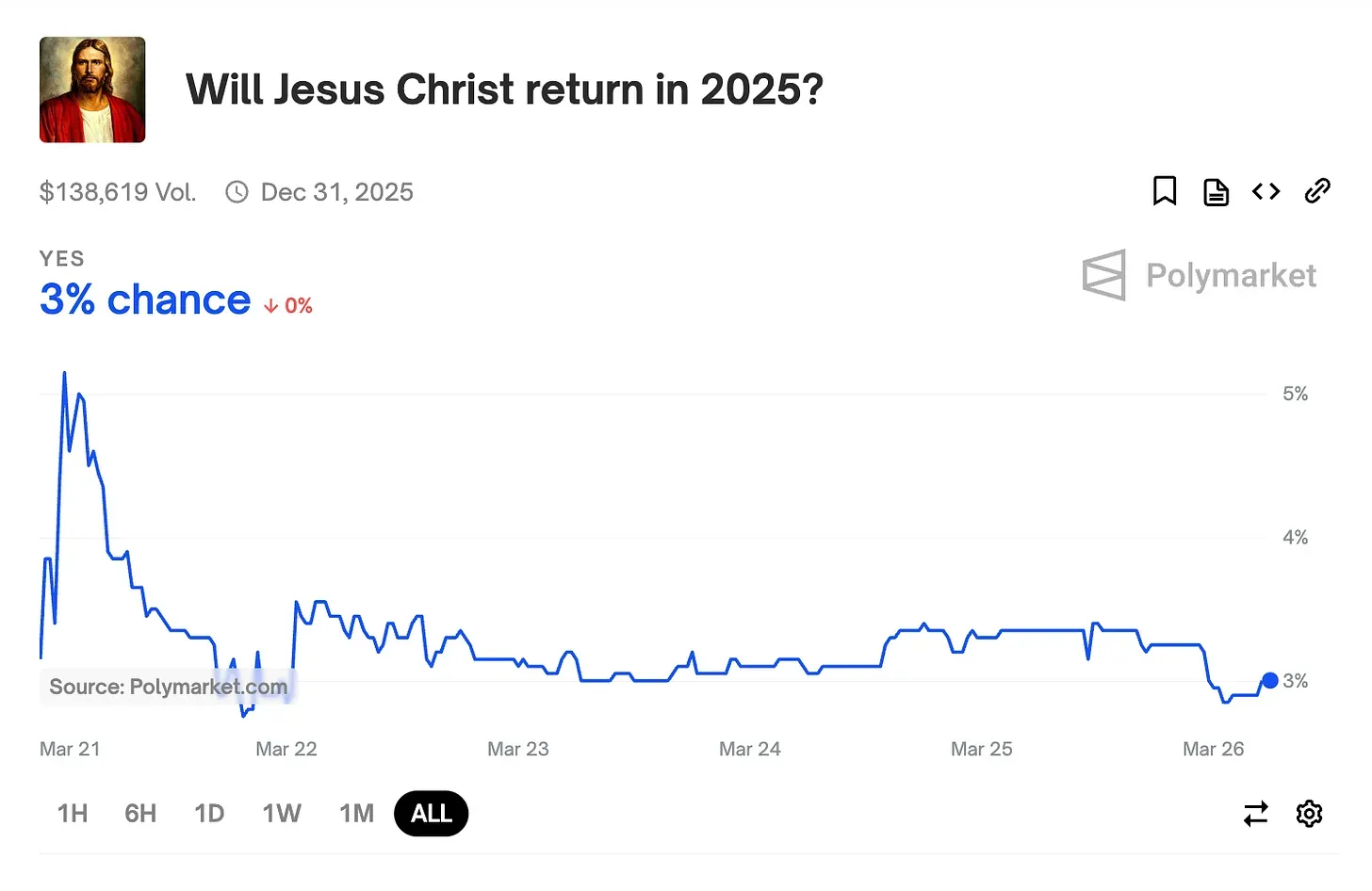
I used to wonder—isn’t this 3% an easy risk-free profit opportunity? But now, I finally understand: this 3% reflects the risk of Polymarket or UMA being attacked. If these vulnerabilities remain unfixed, future predictions will become distorted, as they will always factor in the expectation of a system exploit.
The recent wave of two major governance attacks 3 highlights how decentralized governance mechanisms are still immature. Judging from the results, decentralization might cause more harm than good. Those who focus solely on outcomes and token prices will naturally complain about decentralization’s endless problems—they expect a ready-made, perfect solution.
But that’s not how technological progress works. The crypto space offers strong economic incentives, attracting attackers who, in effect, help "debug" the system. It may look chaotic, but this trial-and-error process is key to rapid iteration. Only at moments like these can we truly grasp what people mean when they say, “crypto is still early.” It’s precisely because these mechanisms require significant improvements that there is still room for price growth.
Come to think of it, I might actually be more optimistic than UMA.



